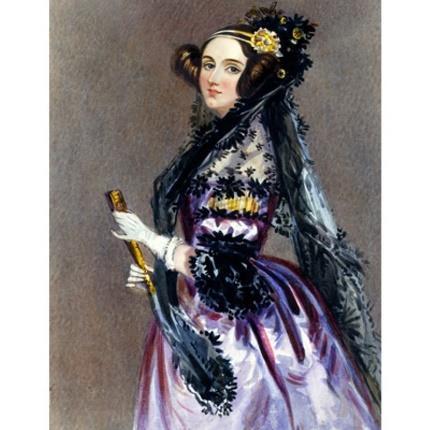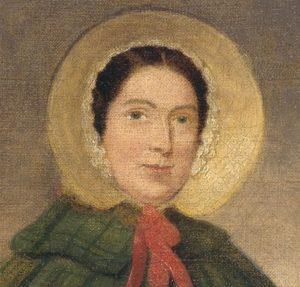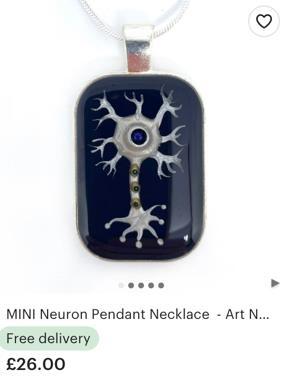THE B-WORD



Bovine tuberculosis (bovine TB) is a disease in cattle caused by the bacterium Mycobacterium bovis. It is mainly in cows but has been shown to be transmitted to humans, goats, cats, dogs and wild animals [1]. Humans can be infected with bovine TB by drinking raw unpasteurised milk from infected cattle or by inhaling infected droplets [2]. It can be difficult to detect as the course of the disease is long acting it may be a long time before animals display clinical signs [3]. Often it can take months or years to kill animals that have been infected, so cattle are tested annually to reduce this risk. Bovine TB can also be spread via movement of infected domestic animals or contact with infected wild animals [3]. TB is a zoonotic disease It can spread from cattle to humans. Although M. bovis is not the main cause of tuberculosis in humans, they are susceptible to bovine TB. Human Tuberculosis is one of the top ten causes of death worldwide [4]. In some countries, up to 10% of human TB is due to Bovine TB [3]. In the 1930s 40% of cattle in the UK were infected with bovine TB and approximately 50,000 new cases of human infection with bovine TB were recorded every year [4]. By reducing the number of cases in cattle, this would reduce the number of deaths in humans from TB.
TB tests are carried out by vets every year [5]. The test involves injecting two sites on the neck of cow with tuberculin A protein that stimulates the animal’s immune system and causes swelling if they have been exposed to the pathogens [4]. 3 days later the sites are checked. If there is a lump at the top site of the injection this shows exposure to Mycobacterium avium (Bird TB) and a lump at the lower site shows exposure to Mycobacterium bovis [4]. Any cows infected with TB are then culled and other farms in the area are re tested to prevent further spread.
Badgers can become infected with M. bovis but live with it asymptomatically throughout their lifespan [6]. However, badgers are one of the biggest causes of spread of the disease through their urine, faeces and discharge from bite wounds [6]. The cattle will the graze in contaminated grass, causing them to contract the disease. To reduce the spread of Bovine TB, the Department for Environment, Food and Rural Affairs (Defra) produced the Bovine TB Eradication Programme for England in 2011, allowing the cull of badgers [6]. The Exmoor culls supports this decision as 85% of culled badgers tested positive for bovine TB which poses a significant risk to cattle [5]. Culls are also seen to be more economical than other methods such as vaccinating as on average a vaccine can take more than ten years and 500 million dollars to manufacture on a commercial scale [7]. As many badgers are asymptomatic and can easily pass on Bovine TB culls can be a way of reducing this risk. However, 94% of transmission of bovine TB is transferred between cows suggesting that culling of badgers is not the most effective solution to the problem [8]. Badger culling is also seen as unethical as it goes against the legal protection given to badgers by the Badgers Act 1992 [5]. Many animal rights activists and members of the public protest against the culls due to these ethical reasons. Currently alternative methods to prevent Bovine TB spread are being made such as vaccines.

Trials for vaccinating badgers against TB have proved to be safe and effective in developing herd immunity. The largest badger vaccination project in England done by the Derbyshire Wildlife Trust has vaccinated 700 badgers [10]. Vaccinating badgers is seen to be a more humane way of controlling the disease as a badger is vaccinated rather than culled. Recent studies suggest that it reduces the severity of the disease and new infections by about 79% [10]. However, it is difficult to judge quite how effective this programme will be as it can be challenging to capture badgers. In Northern Ireland the current capture rates are 30% suggesting it is not very effective [10]. Wildlife populations can also be hard to keep track of so estimation of the percentage of the population vaccinated can vary constantly. To keep track of a wild population much needs to be known about their behaviour and information collected which can be achieved by looking for tracks often using radar and thermal imaging [11]. As this is a time consuming process it can often be difficult to locate badgers.
In conclusion, Bovine TB is a large current issue in modern veterinary medicine as it is zoonotic so poses a human health threat. Looking to the future, I believe a vaccine for bovine TB should be made and given to cattle.
1. Sichewo PR, Vander Kelen C, Thys S, Michel AL (2020) Risk practices for bovine tuberculosis transmission to cattle and livestock farming communities living at wildlife livestock human interface in northern KwaZulu Natal, South Africa. PLoS Negl Trop Dis 14(3): e0007618. https://doi.org/10.1371/journal.pntd.0007618
2. AHDB (2022) Bovine Tuberculosis [Online] Bovine Tuberculosis | AHDB (Accessed 7.8.2022)
3. Woah.org (2022) Bovine Tuberculosis https://www.woah.org/fileadmin/Home/eng/Media_Center/docs/pdf/Disease_cards/BOVINE TB EN.pdf (Accessed 30.7.2022)
4. Steel, G, 2022, Never work with Animals The unfiltered truth about life as a vet Harper Collins Publishers, London Page 17
5. Martin Hancox, August 2002 ‘The badgers/ bovine TB debate’ Microbiology today vol. 29 pages 166 167 (Accessed 30.7.2022)
6. Royal Society of Biology (21.02.2014) Badger and Bovine TB [Online] Badgers and bovine TB (rsb.org.uk) (Accessed 25.08.2022)
7. Douglas Broom (2 June 2020) 5 Charts That Tell the Story of Vaccines Today [Online] https://www.weforum.org/agenda/2020/06/vaccine development barriers coronavirus/ (Accessed 22.08.2022)
8. Badger Trust (2022) The Badger Cull [Online] Can the Cull stop badger culling | Badger Trust (Accessed 31.08.2022)
9. Helen Briggs (27 August 2013) Q&A: The Badger Cull [Online] Q&A: The badger cull BBC News (Accessed 31.08.2022)
10. Sue Mayer March 31, 2020 ‘Bager TB vaccination: a practical and humane alternative to culling’ vet times vol. 50, issue 14, pages12 14 (Accessed 30.7.2022)
11. Woodland Trust (2022) Badger https://www.woodlandtrust.org.uk/trees woods and wildlife/animals/mammals/badger/ (Accessed 30.7.2022)


Daughter of poet Lord Byron, Lovelace is considered the first computer programmer. She met Babbage in 1833 who showed her a section of engine. In 1843, she published a translation of an article on analytical engines, to which, she added her own annotations including sequences of operations for solving complex mathematical problems.

Carson, born in Pennsylvania, became a marine scientist before beginning a writing profession. She noticed the impact that humans had on the natural world and challenged the current ideas about human superiority their control over nature. In her novel Silent Spring, she discusses the overuse of pesticides on soils and plants, stating alarming facts about how traces could be found in human food.

During the Manhattan project, she worked at Columbia university helping to develop the process for separating uranium into its isotopes by gaseous diffusion. After the war, she made the first confirmation of the theory of beta decay. In 1956, she was approached by Lee and Yang (fellow physicists) who asked ger to design an experiment to prove their theory; when they got a Nobel prize, her work was not acknowledged.

Born in Turin, Italy, Levi Montalcini became the longest lived Nobel Laureate. She successfully isolated a substance harvested from tumours in mice that caused vigorous nervous system growth in chicken embryos. The discovery of what are now known as growth factors has provided a deeper understanding of medical problems like deformities, senile dementia, delayed wound healing, and tumour diseases.


Maynard Daly became the first African American woman to gain a doctorate in chemistry in the USA. She helped discover the link between cholesterol and clogged arteries along with studying the effects of cigarette smoke on the lungs. The importance of her work on the composition of cell nuclei and protein structure was mentioned in Watson and Cricks Nobel acceptance speech.
Merian was a naturalists and nature artist known for her illustrations of insects and plants. Her work on insect development and transformations through metamorphosis contributed advancements to the field of entomology (study of insects). Her work was purchased by Peter I of Russia and she had several books published throughout her lifetime.

Due to her poor background, Mary had to teach herself geology and anatomy prior to her fathers’ death. Throughout childhood she found several fossils in her local area. As she continued to find them as an adult, male scientists bought them and would not credit her in their publishing’s. She struggled to be taken seriously but thanks to a friend’s generosity when she was financially troubled, she made many discoveries.
Gerty became the first woman to win a Nobel in science in 1947. In America, they first studied the fate of sugar in the animal body and the effects of insulin and epinephrine. The presence of glycolysis of tumours in vivo was demonstrated. Her work on carbohydrate metabolism passed from studies of whole animal to isolated tissues and, later, tissue extracts and isolated enzymes, some in crystalline form, were studied.

Macular degeneration is the deterioration of a section of the retina called the macula. There are two types of AMD (age related macular degeneration): dry and wet. Dry AMD makes up 80% of cases, it occurs when the macula thins and clumps of protein, called Drusen grow. Wet AMD is more serious where abnormal blood vessels grow under the retina, these vessels leak and scar the macula. Their sight deteriorates much faster. AMD is most common in people who: eat a saturated fat diet; smoke; are over 50 years old; have family history of the condition.
Ex- biology teacher at Winstanley college, Dr Joanne Convery, studied Biology, Chemistry and Psychology for A levels. She then did a bachelor’s degree in biochemistry and a masters in biophysics and PhD in clinical engineering. Post graduation, she was part of a team who were trying to grow retinal pigment cells and remove the solution that was secreted, they would then take the target proteins and compare them to those who have AMD. This research was hoping to lead to treatment of the condition. Jo’s advice for anyone wanting to go into scientific research is “be prepared for if an experiment fails (80% of research does not lead anywhere), do not be scared to move projects halfway through, pick up as many skills as you can for future work, talk to new people.”
Barbra Walker currently suffers with dry AMD and was diagnosed in 2009. She regularly uses the Amsler Grid to check for distortion in the squares. The first difference she noticed was road signs and has not been able to drive for three years now which was hardest to accept as it reduced her independence. She cannot read font size 12 without aid of a magnifying glass so uses a kindle with font size 28. Crossing roads is an issue since she cannot see how many cars are in a queue due to gaps in her vision. She has adapted to moving her head to ‘fill in the gaps’ when looking at someone directly. She has been officially considered ‘visually impaired’ however this was delayed by the Covid pandemic.
The Amsler grid is a method of testing for deterioration in AMD patients. You cover one eye and look at the dot, any distortion in the lines or missing gaps might indicate a problem

There are no treatments available at the moment, she has her name down to participate in trials and so far, has been offered two: an invasive gene implant using CRISPR technologies; a telescope study and screening study that she is waiting to hear back from. For now, along with using her kindle, she uses magnifying glasses and lamps, provided by the Welsh eye care system, which she keeps in every room.
Both her mother and aunt had eye conditions that were like AMD but was undiagnosed. Her older brother had wet AMD in one eye and has regular injections into the eye for six years meaning he is still able to drive and read normal font sizes on music sheets. Her younger sister has just started showing symptoms and is being monitored regularly.

CRISPR technology allows scientists to edit DNA sequences. It is being utilised in medical research with hope it can cure diseases like cancer, AIDS, Parkinson’s and more. There are many ethical qualms, the technologies give us the ability to genetically modify children before birth, due to its precision, so they fit the ideals of the parent.
Overall, research into an illness such as this would be an interesting and fulfilling pathway for biomedical, biology, biochemistry and medical students. The outcomes of the effort are noticeable and have an instant impact on people suffering with these conditions, giving them their freedom back.
 By Bec Lee
By Bec Lee
Neurogenesis is the process of forming new nerve cells in the brain, which starts in embryonic development and continues until 24 months (apart from a few specific areas of the brain). As neurons cannot divide by mitosis, generating them prenatally is the main way the majority of nerve cells are developed in every human. In cases of brain damage, neurogenesis doesn’t occur to regenerate the damaged cells, and so to prevent them staying there, they undergo cell death. An example of the adverse effects caused by damaged neurons in the brain is the loss of hippocampus neurons, because losing even a small percentage reduces quality of life after traumatic brain injury (TBI) as it often results in memory impairments. These effects are also shown when motor neurons are lost from the spinal cord, as the area is critical for humans and leads to functional deficits such as breathing difficulties or loss of hand function.
A type of cell death, known as apoptosis, is specifically programmed by the cell to remove unwanted or damaged cells, which is crucial in development to prevent an abundance of nerve cells. After TBI, apoptotic cells are observed alongside necrotic cells in areas near the injury, but apoptotic cells are also observed in areas remote to the injury. This is significant as you would expect to see necrotic cells, especially around the injury, as they are carrying out the typical response to being damaged beyond repair. However, considering the damage done to the brain, having cells undergo apoptosis is not immediately perceived as beneficial because the number of neurons has already been critically reduced. In TBI recovery, the cells that aren’t functioning or have connection errors but haven’t undergone necrosis are instead removed by apoptosis, which is beneficial because it isn’t ideal for the cells to remain in the areas for potential risk of further damage. This highlights a crucial idea within cell death, that it isn’t just limited to either apoptosis or necrosis but is instead a range between and including them.
There are 2 main pathways for apoptosis, intrinsic (mitochondrial) and extrinsic (cell membrane receptors). The intrinsic pathway is triggered within the cell by a varied range of intracellular signals that converge onto a family of Bcl 2 proteins, which regulate apoptosis by either inhibiting or promoting it. These signals result in cytochrome c being released from the mitochondria, and this activates caspase 9 (caspase is a family of protease enzymes that execute apoptosis). The extrinsic pathway is when ligands (molecules that irreversibly bind to receptors) bind to death bound receptors on the cell membrane, which results in the formation of the death inducing signalling complex. This is a multi protein complex formed from various components, specifically by apoptosis inducing cellular receptors within the death receptor family. This activates caspase 8, which triggers receptor induced apoptosis and thus the cell dies. Apoptosis pathways are observed within TBI, such as reperfusion injury from strokes. Blood flow returning to an area previously deprived of oxygen causes a disproportionately higher level of apoptosis where you would expect recovery. As the blood flow returns to the ischemic tissue, the extrinsic pathway of apoptosis is activated.
A problem with neuronal apoptosis is that if it occurs post neurogenesis, without reason/unnecessarily, then it contributes to neurodegenerative disorders/conditions such as Alzheimer’s, Parkinson’s and strokes. This is detrimental as it significantly reduces various important neurological skills and functions such as cognitive retrieval, movement, and neurotransmitter production. Extended research has been done into cell death processes to try and treat these disorders, but TBI research has been historically centred on necrosis. In the areas of head injury and strokes, conclusions were often unsatisfactory due to a higher degree of apoptosis within these injuries. The main focus of this research is to figure out the molecular mechanisms behind cell death processes and their implication in these conditions, so they can be treated. A highly researched example of neuronal apoptosis is sympathetic neurons in the superior cervical ganglion as research into this began in the 1980s. They require nerve growth factor (NGF) to survive when they innervate their target tissue during the final stages of neural development. If there’s a lack of NGF, they die by apoptosis in a manner dependent on the inhibition of transcription. A lack of NGF is one of the intracellular signals that activates the intrinsic pathway of apoptosis, and the Bcl 2 protein family and XIAP (X linked inhibitor of apoptosis protein) is implicated in this. As previously mentioned, the Bcl 2 protein family regulates apoptosis whereas XIAP inhibits apoptosis. XIAP deficiency leads to promoted apoptosis and this causes severe physiological symptoms, wherein the only viable treatment to live is a stem cell transplant.


ETSY is an online shopping platform that promotes small businesses to sell hand made items and self launched businesses. This is a brilliant way to sustainably shop and has proven economically viable.
This small businesses focuses on cell inspired keyrings, earrings and necklaces:
https://www.etsy.com/uk/shop/CaroGrayCreates?ref=usf_2020

This shop makes key rings with multiple chemistry related charms
https://www.etsy.com/uk/shop/CraftchemyGiftShop?ref=usf_ 2020
This shop makes organic chemistry stencils to help drawing molecules


https://www.etsy.com/uk/shop/MyChemistryStencil ?ref=usf_2020
Evolution Poster
This shop makes zoological posters showing phylogenic trees
https://www.etsy.com/uk/shop/EvolutionPosters?ref =usf_2020
They make stickers and pins of anatomy and cells

https://www.etsy.com/uk/shop/SomethingSciencey? ref=usf_2020
They make small keyrings with biological theme


https://www.etsy.com/uk/shop/SomethingSciencey? ref=usf_2020
They
https://www.etsy.com/uk/shop/WoollyScience?ref= usf_2020
PictureScience


https://www.etsy.com/uk/shop/PicturingScience?ref =usf_2020
ProudScience

https://www.etsy.com/uk/shop/ProudScience?ref=us f_2020
https://www.etsy.com/uk/shop/BeeBumbleJustForY ou?ref=usf_2020
Personalised medicine is a model that works to separate populations based on their genetic, ethnic, and individual backgrounds {1}. This holistic approach to an individual's medical needs can rapidly transform the effectiveness of treatments and diagnosis as well as allowing for improved quality of life.
The key differentiating factor in personalised medicine is the substantial focus put on the human genome. In modern medicine this approach is already used in the diagnosis and treatment of cancer{9}.Through analysis of genetic anomalies in patients who have been diagnosed with cancer previously, medical professionals are able to provide personalised cancer treatment plans to those who seem more susceptible to the development of cancer {9}. These mutations are often inherited and combined with other random gene mutations and will dramatically increase a person’s chance of developing cancer. A problem with current cancer treatment is that it aims to destroy any rapidly dividing cells. However the treatment can also destroy white blood cells {2}. The loss of these cells is referred to as Neutropenia and can vastly increase the chances of developing an infection {2}. Although there are guidelines set in place to prevent infection during treatment, these usually consist of trivial things such as avoiding shaking hands and regularly washing. A breakthrough was made in 2018 that introduced a personalised medication known as Vitrakvi which is administered orally in liquid or tablet form {8}. This medication is given when all other options of generic treatment have been exhausted or if the cancer has metastasised. Through this treatment the genetic driver of the cancer cells are inhibited and thus the root of the issue is destroyed without excessive damage to the body’s white blood cells {8}. Physicians prescribe Vitrakvi based on specific biomarkers and thus can ensure there are fewer side effects. Re evaluating cancer treatments from has proven to be more effective in early recognition of cancer and targeting the problem directly through genetic driver recognition has proved to be more precise and allow for a less stressful experience.
With the increasing integration of personalised medicine, one of the more revolutionary end points is overall improvement of population health. With personalised medicine, a pharmacogenomic profile can be made which takes into account the patient's microbiological and individual different needs which can ensure tangible outcomes {1}. A successful intervention would prevent the prolongation of disease and ensure that diseases are dealt with early in life. Already this method has been accompanied with the newly implemented point of care testing (POCT) in local General practitioners' offices. Therefore, it is imperative that diagnostic tests, such as Full Blood Counts (FBC), are readily available. This is so that GPs can easily test for probable diseases based on the holistic knowledge of the patient {1}. Through early recognition of diseases with genetic mapping it can be ensured that an effective treatment can be put in place.
Personalised medicine aims to further include and educate the patients on their options regarding what the best treatment plan is for them. With personalised medicine, all factors are taken into account along with ethnicity and genetic tests that can be performed to identify the underlying cause and often provide a simpler treatment for the condition. Diabetes that stem from a monogenic cause are currently one of the biggest contributors to the growing need of development of personalised medicine{5}. As these forms of diabetes develop from a single gene mutation, with precision medicine, it would be possible to implement effective treatment strategies to those who possess the gene and through understanding of the unique pharmacogenetics of diabetes treatment, select treatments could be immediately avoided. In the future a deeper understanding of the monogenic nature of some diabetes and its implications will allow patients to develop a deeper understanding of the cause of their issue and allow them to request specific medications and treatments {6}.
For personalised medicine to be implemented worldwide in the future, it would require an abstract multidisciplinary team consisting of a wide range of medical, industrial and health professionals to be formed with regular input from the patient themselves; however, this could pose a breach of confidentiality {7}. Sustaining confidentiality is highly advised by the GMC and is a patient's legal and ethical right {10} so with all the sharing of information a patient could feel as though they are being studied rather than treated. Moreover, it raises the ethical dilemma between the social benefit of scientific development versus the individual benefit that a patient would gain with the integration of personalised medicine {10}.
Personalised medicine has already proved to be resourceful so with further development of individual gene study and the translation into effective medical care, personalised medicine would be able to revolutionise the everyday approach to medicine. The tailored therapies that would arise from personalised medicine would allow for an overall improved treatment experience. Despite early opposition to its implementation on a global scale, personalised medicine would eventually be able to become the scientific revolution required to further push the strive for enhanced quality of life and just treatment for every individual.
{
1} NHS ENGLAND(2016),Available from :Improving outcomes through personalised medicine (england.nhs.uk)
{2} CDC(2022),Available from : Side Effects of Cancer Treatment | CDC {4} Medicinenet(2021), Available from :How and Why Does Ethnicity Affect Diabetes? (medicinenet.com)
{5} Pubmed(2018), Available from :Precision medicine in diabetes prevention, classification and management PubMed (nih.gov)(accessed 27 August 2022)
{6} Genomicsengland(2022),Available from :100,000 Genomes Project | Genomics England(
{7} Pubmed(2017), Available fromEthical Issues Surrounding Personalized Medicine: A Literature Review PubMed (nih.gov)
{8}Future of personal health(2020), Available fromHow Personalized Medicine Is Revolutionizing Cancer Treatment Future of Personal Health
{9}Cancer.Net(2018), Available fromThe Genetics of Cancer | Cancer.Net
{10} General Medical Council(2022),Available from :Disclosures for the protection of patients and others ethical guidance GMC (gmc uk.org)